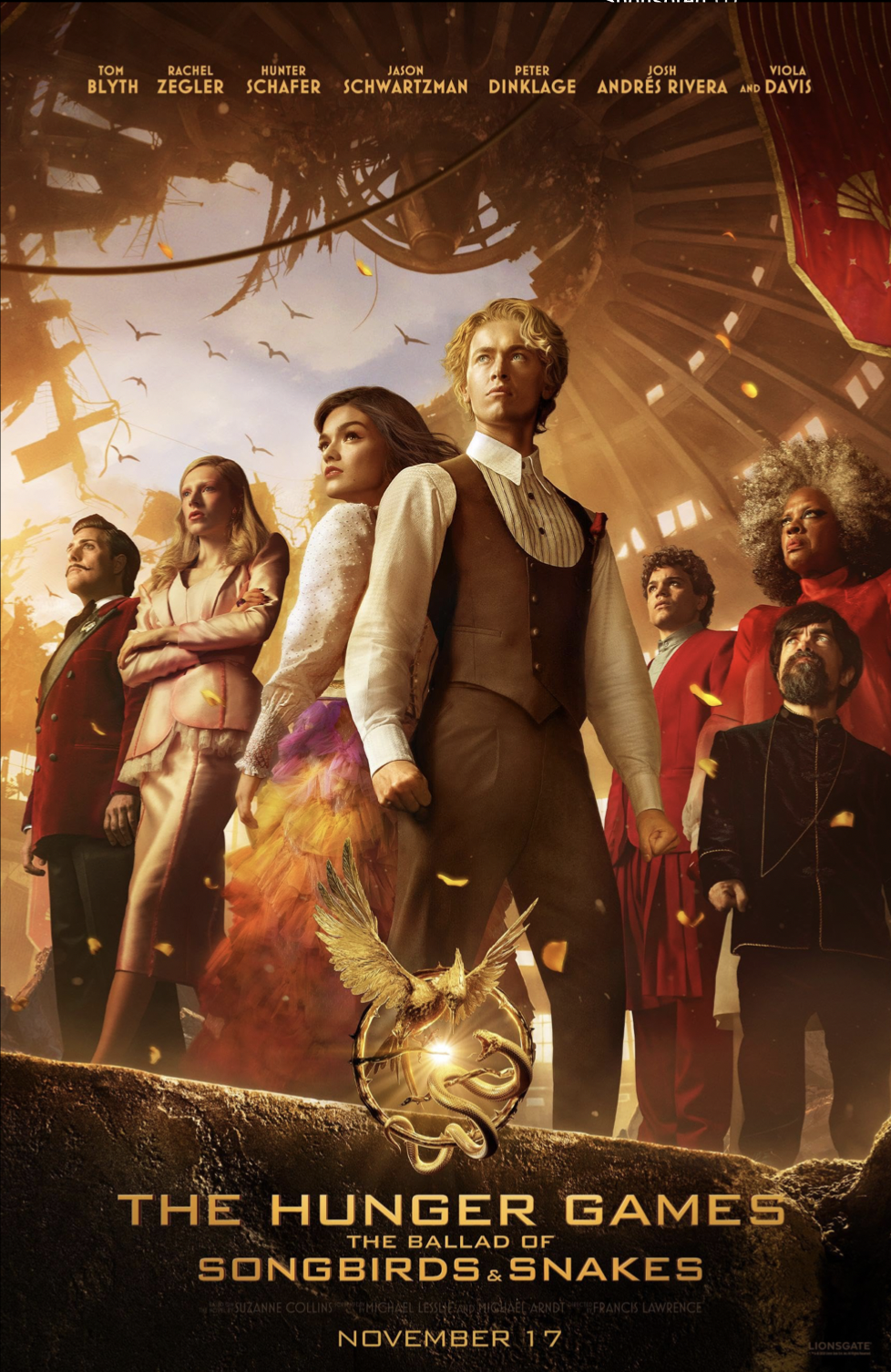The Hunger Games: The Ballad of The Song Birds & Snakes Review
We are officially back in our dystopian era with the release of The Hunger Games: The Ballad of The Song Bird & Snakes. The prequel takes place 70 years before the beloved story of Katniss Everdeen and Peeta Mellark.
Source: IMDb
The prequel tells the story of a young President Snow and the very person who destroyed him, Lucy Gray Baird. The story of the capital Golden Boy and District 12 songbird has been building up anticipation since its book release in 2020.
Many fans of The Hunger Games were excited, but also curious about the film's execution. After refreshing words from Suzanne Collins, the writer of the series, any concerns were laid to rest.
“Of all the entries in the franchise, this film reminds me most of Catching Fire,” said Collins.
Catching Fire is the second installment in the franchise, known to be a fan favorite and some may say the best movie in The Hunger Games Universe.
After watching the film on opening day, I can confirm that the same thrill you may have felt when you saw Katniss draw her arrow to break the arena's barrier is the same feeling you will leave with when the credits roll.
If you haven't seen the movie or read the book yet, spoiler alert ahead as I give my review on The Hunger Games: The Ballad of The Song Birds & Snakes.
The movie starts out with a scene of a cold winter night in the capital during the war. A very young Coriolanus Snow and Tigris are trying to make it home safely when they see a man mutilate a dead man in the snow. When the two make it home, Snow is told that his father was killed in the districts. That was the fall of house Snow.
It would have been nice to see a scene or more during the war since it is the cause of everything that follows, but the movie did a great job at showing the start of how innocent Coriolanus turned into a district-hating President Snow.
The first part of the film almost makes you forget that you're supposed to hate Snow for everything he did in the previous film. Tom Blyth, the actor who played young Snow, was able to show a humanity side to him that at one point makes you feel sorry for him.
As the film progresses, that soft spot you have for Snow turns to ice and you remember that he's the villain.
Rachel Zegler's portrayal of Lucy Gray Baird was phenomenal. Describing her character as a performer forced to fight, Zegler encapsulated the charm and ghostly presence of Lucy. Lucy doesn't consider herself a part of District 12 and she often corrects people as being part of the Covey, a group of performers who traveled through Panem and got stuck in District 12 after the war.
The love story of Lucy and Snow reigns true to a famous quote Snow said to Katniss in Mockingjay Part 1, “It's the things we love most that destroy us.”
In the film, Lucy tells Snow that trust is more important to her than love, and when Lucy realizes that Snow had lied about the number of people he killed, their love story takes a turn. From holding hands by the lake and looking at Katniss's flowers to having their own mini Hunger Games in the woods, Snow and Lucy were the driving points of each other's madness.
Another notable performance is Viola Davis who played Dr. Volumnia Gaul, the villainess Head Gammaker. She is credited with creating mutated animals later used in the games, like Jabberjays.
Also, Peter Dinklage, brings to life Casca Highbottom, the creator of the games who never wanted The Hunger Games to happen. It's revealed at the end of the movie that Snow's father is the one who stole Highbottom’s idea, turned it in without him knowing, and started a 75-year tradition of killing district children.
The idea that a rise in the young adult dystopian genre would emerge again in 2023 was a far-fetched one, but it's happening now and why not have its leading franchise be the one to reignite it?
The Hunger Games: The Ballad of The Song Birds & Snakes was a beautifully written prequel to an equally already beautiful established series. It's a stand-alone film that gives you a greater appreciation of the previous four already made. From the costume design to the set, the movie takes you through a ride of a new story while making you feel like you are still in the world of the later films.
However, the ending leaves you with more questions you came in with, like “Is Lucy Gray really dead?” or “How did Tigris go from a loving cousin to an outcast?”
Hopefully, Suzanne Collins has another story to tell and if not, what do you think happened? Leave a comment down below!

